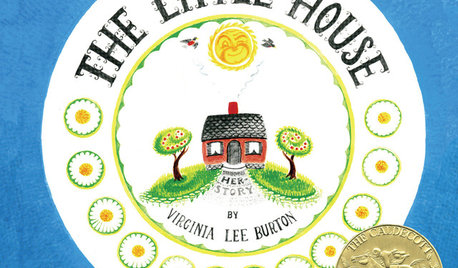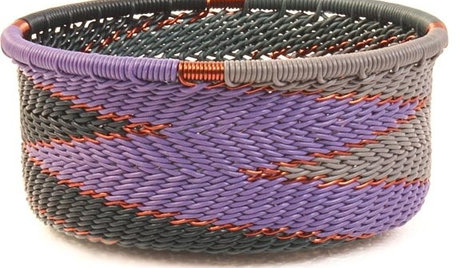Would you mention it?
carolinabluesky
15 years ago
Related Stories

BOOKS11 Great Children’s Books About Home (and 2 Honorable Mentions)
Homes come in many different shapes and sizes, and these kids’ books highlight the tallest, the smallest, the oldest and the silliest
Full Story
KITCHEN CABINETSGet the Look of Wood Cabinets for Less
No need to snub plastic laminate as wood’s inferior cousin. Today’s options are stylish and durable — not to mention money saving
Full Story
ARCHITECTUREArchitect Lingo Decoded for the Average Homeowner
Baffled by your architect's mention of using BIM to show the spatial organization of your home remodel? Get a clue here
Full Story
HOME OFFICESPaperless Home Offices Show Reams of Style
If pesky piles of paper are ruining your interior design — not to mention a forest or two — it may be time to take the paperless plunge
Full Story
PRODUCT PICKSGuest Picks: A Bounty of Baskets Under $50
You'll have stylish organization in the bag — not to mention art and lighting — with great baskets like these
Full Story
DECORATING GUIDESA By-the-Numbers Guide to Going Graphic
Adding life — not to mention organization — to your space can be as easy as 1, 2, 3 with a little paint and imagination
Full Story
HOUSEPLANTSIndoor Winter Gardens for Cheerier Days
Bring plants inside for drab-days mood boosting — not to mention cleaner indoor air and protection for your greenery
Full Story
BUDGET DECORATINGBudget Decorator: 11 No-Sew Home Decor Projects
No seamstress skills? You can still show off fab fabrics and trim — not to mention your creative ingenuity — all around your home
Full Story
KITCHEN DESIGNKitchen Solution: The Open Island
No Room for a Big Island? Here's How to Create More Working Space Anyway
Full Story
GARAGESKey Measurements for the Perfect Garage
Get the dimensions that will let you fit one or more cars in your garage, plus storage and other needs
Full StoryMore Discussions






blueangel
trianglejohn
Related Professionals
Piqua Landscape Architects & Landscape Designers · Aloha Landscape Contractors · Cupertino Landscape Contractors · Deerfield Beach Landscape Contractors · Federal Way Landscape Contractors · Hannibal Landscape Contractors · Lees Summit Landscape Contractors · Mason Landscape Contractors · North Haven Landscape Contractors · Pahrump Landscape Contractors · Vacaville Landscape Contractors · Wallingford Landscape Contractors · Wallingford Landscape Contractors · West Chester Landscape Contractors · East Norriton Landscape Contractorsnannerbelle
deirdre_2007
Lynda Waldrep
Bumblebeez SC Zone 7
dottie_in_charlotte
dottie_in_charlotte
aezarien
laurabs
nancyofnc
aezarien
carolinablueskyOriginal Author
trianglejohn
alicia7b
aezarien
alicia7b
aezarien
alicia7b
coorscat
aezarien